mark donnal
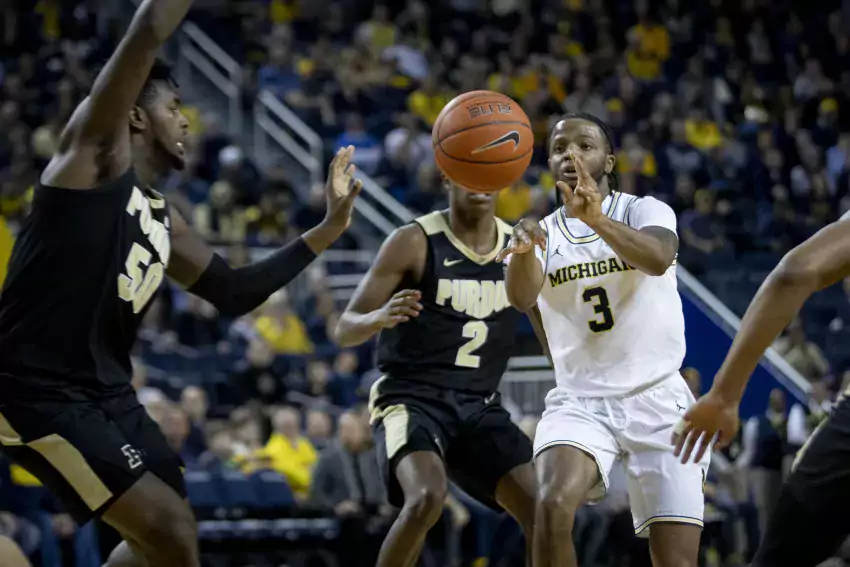
Previously: Part One, Part Two. If you're looking for the Rutgers preview it's here.
You're definitely going to want to at least read part two of this series, which explains the stats I'm using below and details the 2009-14 seasons, before moving on to the rest of this post. Ideally, you'll read part one, as well.
Now that you're caught up, let's get to it.
2014-15: Bad Wheels
Team Stats: 27.7% pick-and-rolls + passes (#36 in country), 0.911 points per play (#62)
The Ballhandlers:
| P&R Plays (Own Offense) | PPP on Own Offense (%ile) | P&R Plays (Passes) | PPP on Passes (%ile) | Total P&R Plays | Overall P&R PPP. (%ile) | Keep % | |
|---|---|---|---|---|---|---|---|
| Spike Albrecht | 65 | 0.815 (70%) | 98 | 1.276 (92%) | 178 | 1.092 (93%) | 36.5% |
| Caris LeVert | 87 | 0.644 (35%) | 58 | 0.862 (34%) | 145 | 0.731 (28%) | 60.0% |
| Derrick Walton | 52 | 0.635 (33%) | 61 | 0.967 (54%) | 113 | 0.814 (47%) | 46.0% |
| Zak Irvin | 60 | 0.783 (63%) | 43 | 1.395 (96%) | 103 | 1.039 (90%) | 58.3% |
| MAAR | 39 | 0.872 (79%) | 19 | 1.737 (100%) | 58 | 1.155 (96%) | 67.2% |
The Screeners:
| Pop Plays (%) | Pop PPP (%ile) | Roll Plays | Roll PPP (%ile) | Slip Plays (%) | Slip PPP (%ile) | Overall Plays | Overall PPP (%ile) | |
|---|---|---|---|---|---|---|---|---|
| Max Bielfeldt | 12 (36.4%) | 1.167 (88%) | 19 (57.6%) | 1.000 (30%) | 2 (6.1%) | 2.000 (—) | 33 | 1.121 (76%) |
| Ricky Doyle | 1 (3.6%) | 2.000 (—) | 26 (92.9%) | 1.308 (74%) | 1 (3.6%) | 0.000 (—) | 28 | 1.286 (90%) |
| Zak Irvin | 9 (69.2%) | 1.222 (—) | — | — | 4 (30.8%) | 2.000 (—) | 13 | 1.462 (96%) |
| Mark Donnal | 1 (10%) | 3.000 (—) | 9 (90%) | 1.556 (—) | — | — | 10 | 1.700 (99%) |
I almost didn't include this season or the next because of Michigan's injury issues, then decided it was useful to see what happens when a team's two best perimeter players get hurt in the same season.
While neither Caris LeVert nor Derrick Walton were producing particularly well in the pick-and-roll before their respective foot injuries, we saw later that these injuries delayed breakouts into effective players—Walton, in particular, eventually became a great P&R ballhandler.
The players that remained were effective but one-dimensional. Spike Albrecht drove to pass. Zak Irvin and Muhammad-Ali Abdur-Rahkman hunted shots off of screens. Irvin, defying reputation, struck the best balance between shooting and passing, and he was a very effective passer. Only MAAR was above-average at generating his own offense off of screens, though.
Derrick Walton's foot injury stunted a developing rapport with Ricky Doyle
Michigan was also working with a limited group of finishers. Ricky Doyle was the best roll man but was a roll man only. Max Bielfedlt(!) ended up with the most plays among screeners even though he was a 30th-percentile finisher on the roll; he salvaged decent efficiency with some pick-and-pop jumpers. If Zak Irvin was setting a screen, it was to pop or slip for a jump shot.
This marks the first season since 2008-09 that Michigan's pick-and-roll usage went down; they also slipped 40 spots in the efficiency rankings. This team was going to drop off with the departures of Nik Stauskas, Glenn Robinson III, and Jordan Morgan, then injuries made matters worse. Even if LeVert and Walton weren't high-level P&R ballhandlers at this point, their spot-up shooting could've helped.
Even with all that, Michigan's pick-and-roll offense ranked in the 83rd percentile by points per play. They weren't elite; they were still good. They just couldn't build the offense around it to the extent they had the previous year.
2015-16: Bad Wheels 2
Team Stats: 30.5% pick-and-rolls + passes (#22 in country), 0.923 points per play (#80)
The Ballhandlers:
| P&R Plays (Own Offense) | PPP on Own Offense (%ile) | P&R Plays (Passes) | PPP on Passes (%ile) | Total P&R Plays | Overall P&R PPP. (%ile) | Keep % | |
|---|---|---|---|---|---|---|---|
| Derrick Walton | 128 | 0.711 (44%) | 120 | 1.000 (59%) | 248 | 0.851 (51%) | 51.6% |
| Zak Irvin | 149 | 0.826 (68%) | 98 | 1.306 (93%) | 247 | 1.016 (86%) | 60.3% |
| Caris LeVert | 57 | 0.877 (77%) | 62 | 0.855 (32%) | 119 | 0.866 (54%) | 47.9% |
| MAAR | 67 | 0.910 (82%) | 41 | 0.805 (24%) | 108 | 0.870 (55%) | 62.0% |
| Duncan Robinson | 19 | 0.632 (29%) | 17 | 0.647 (9%) | 36 | 0.639 (14%) | 52.8% |
The Screeners:
| Pop Plays (%) | Pop PPP (%ile) | Roll Plays | Roll PPP (%ile) | Slip Plays (%) | Slip PPP (%ile) | Overall Plays | Overall PPP (%ile) | |
|---|---|---|---|---|---|---|---|---|
| Mark Donnal | 12 (21.8%) | 0.500 (12%) | 40 (72.7%) | 1.250 (60%) | 3 (5.5%) | 0.667 (—) | 55 | 1.055 (60%) |
| Ricky Doyle | 1 (2.9%) | 2.000 (—) | 30 (88.2%) | 1.200 (54%) | 3 (8.8%) | 0.333 (—) | 34 | 1.147 (73%) |
| Moe Wagner | 3 (15.8%) | 1.667 (—) | 16 (84.2%) | 1.375 (77%) | — | — | 19 | 1.421 (95%) |
| DJ Wilson | 9 (64.3%) | 0.556 (—) | 4 (28.6%) | 1.500 (—) | 1 (7.1%) | 0.000 (—) | 14 | 0.786 (24%) |
| Zak Irvin | 9 (81.8%) | 1.000 (—) | — | — | 2 (18.2%) | 0.000 (—) | 11 | 0.818 (27%) |
An unfortunate repeat, as Walton's previous foot injury sapped his ability to finish at the rim and LeVert—who'd improved considerably as a scorer off the high screen—again lost most of the season to a bad wheel.
Beilein increased the volume past where it had been in 2013-14 and the team's PPP slightly increased, though they came out worse compared to the rest of the country. Irvin was easily the team's best P&R ballhandler, continuing to pass at a high level while making enough pull-up jumpers to be relatively effective as a scorer.
some of those jumpers were rather important
MAAR pulled off a tough feat, averaging more PPP using his own offense than when he passed; that's very much a good news/bad news situation.
The roll men remained limited. This was the year Ricky Doyle seemingly lost the ability to catch and finish, so Mark Donnal ended up as the primary screener. Neither graded out particularly well. The center who did: enigmatic freshman Moe Wagner, who scored well as a roll man and flashed the ability to pop out and hit jumpers.
[Hit THE JUMP for Michigan exploring that a bit more.]
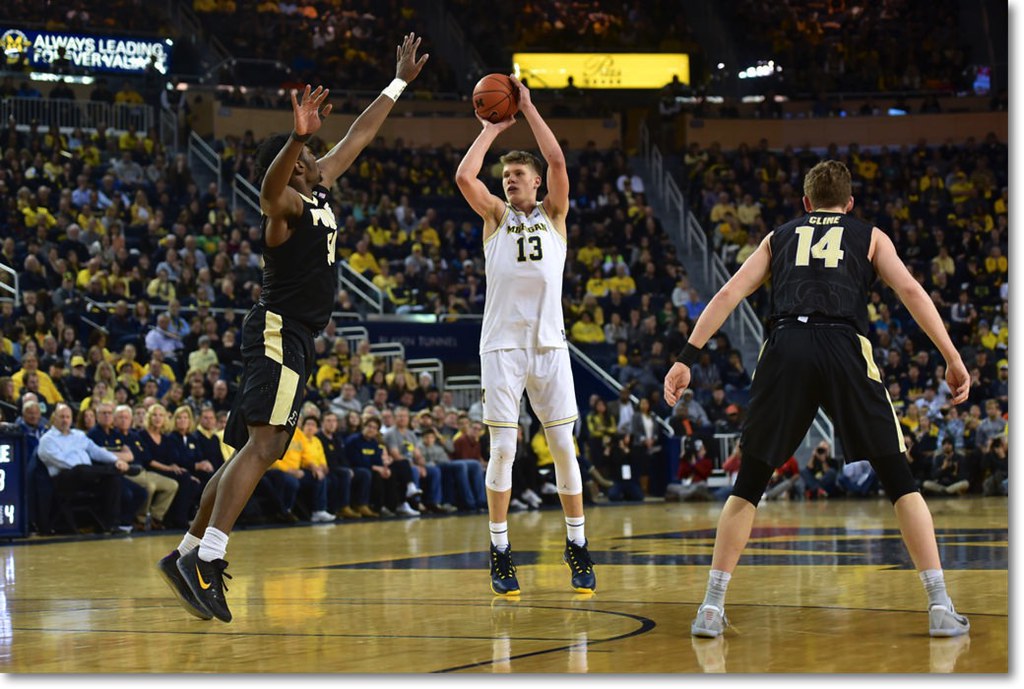
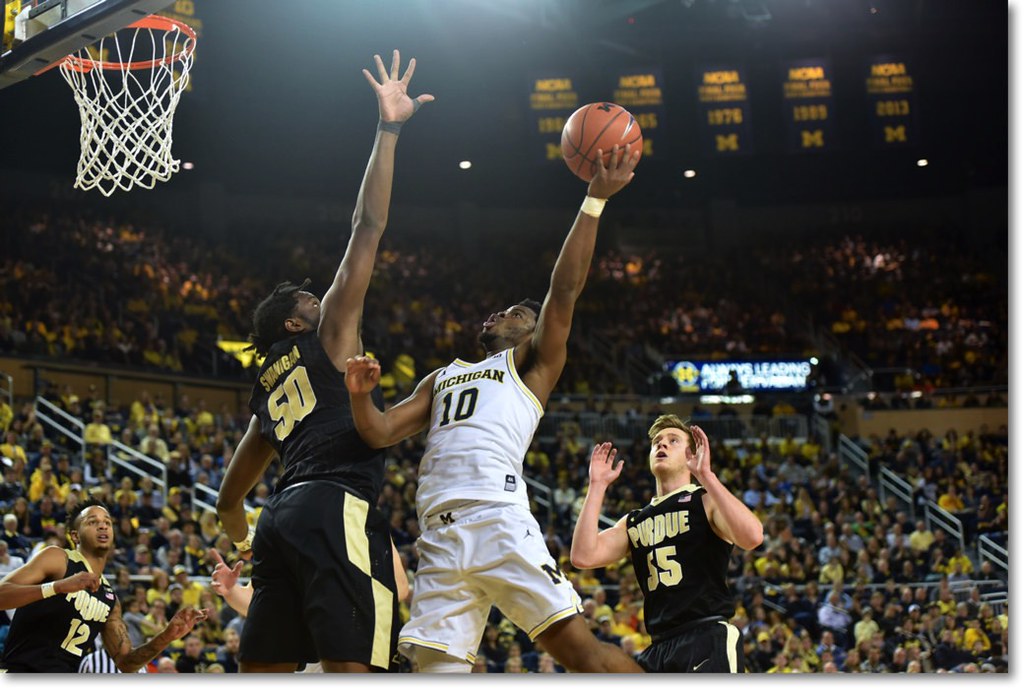
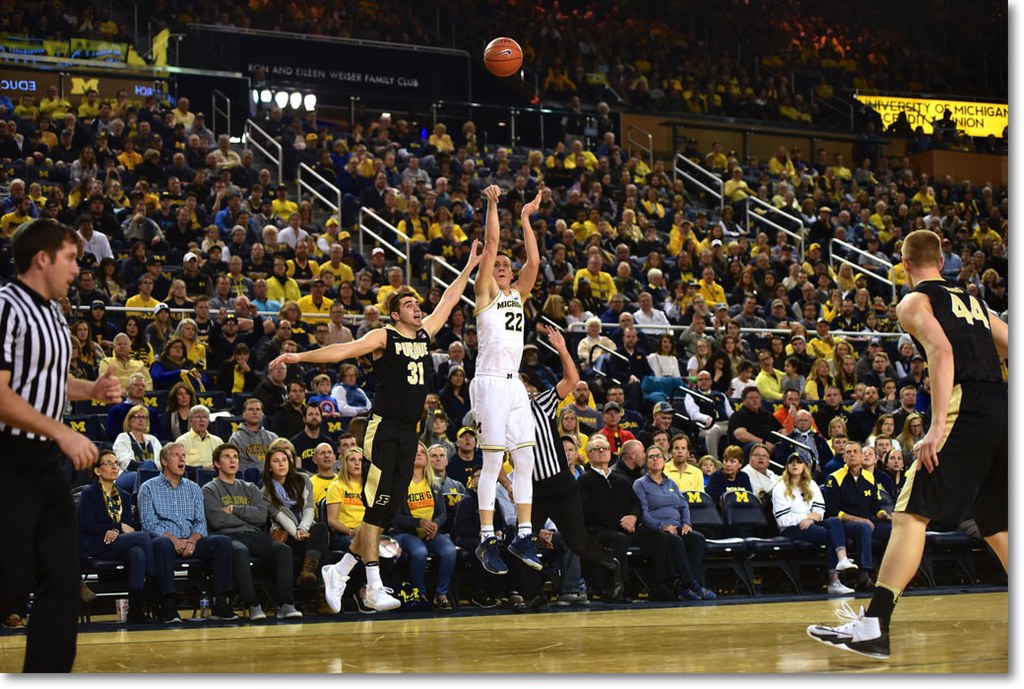

Stopping all of this has proven quite difficult. [All photos: Bryan Fuller]
Generally, opposing coach press conferences after losses are brief and uninformative. After the Moe Wagner-Derrick Walton pick-and-pop obliterated Purdue's defense to the point they had to entirely change strategies, however, Matt Painter went into great detail on the problems posed by Michigan's offense, specifically those that result from facing two big men that can shoot.
To set this up: Purdue started the game with Caleb Swanigan defending Wagner. Michigan exploited the matchup by forcing Swanigan out to the perimeter, usually with high screens. Wagner feasted.
Wagner went 9-for-12 in the first half, hitting 5-of-6 twos and 4-of-6 threes. Michigan fielding a lineup with five viable outside shooting threats wreaked havoc on Purdue's defense and their rotation. 7'2" center Isaac Haas usually plays 20 minutes per game, often pairing with Swanigan to form an imposing frontcourt duo. Here's what happened when Purdue put both big men out there:
If Michigan's big men can't shoot, Swanigan wouldn't be in no-man's land, and Haas would be in position to block Simpson's shot into the tenth row if he manages to get into the paint anyway. The threat of Wilson and Wagner instead opened a cavernous lane for the quick point guard to bolt through.
As a result, Haas played only seven minutes in the first half, and just two with Swanigan also on the court. The adjustment Painter had to make in the second half forced his second-best player off the floor almost entirely:
We just went and switched everything, knocked them out of their [pick-and-pop] action. The downside of that is now you have your bigs guarding their guards and they can break you off the dribble. Then you have to help, now you’ve got to get to their shooters. When you have a good point guard and you have bigs that are skilled that can shoot and spread you out, you have to pick your poison. We can flip it on them, but when you don’t score the ball at the rim—and I thought we had a lot of opportunities for Haas in there, missed dunk, layups, a hook, that he normally makes—if we could’ve made those plays, we could’ve lived with all of it, because we wouldn’t have been out of the game, and now we put them in a bind because they’re eventually going to foul us and get out of the game. But if we can’t keep you in the game because [of defense], that gets hard for us. We just decided at half that we had to switch, and then when Donnal came in the game we could play Isaac [Haas]. But obviously we didn’t play well enough to be able to get back in.
Haas played four second-half minutes, entering the game after Michigan inserted Donnal and exiting at the first stoppage after Beilein lifted Donnal and put DJ Wilson at center. The combination of Wagner and Wilson in Beilein's offense rendered the second-best player on the Big Ten's best team effectively unplayable.
[Hit THE JUMP to see how Michigan took advantage of Purdue's new defensive tack.]
photo does not fit with theme of bullet [Patrick Barron]
Pretty grim. Mark Titus on the state of Big Ten basketball:
We’re only four years removed from the Big Ten’s incredible 2012–13 campaign, when six different teams cracked the top 10 of the AP poll and the regular-season title came down to the final shot on the final day of conference play. A Big Ten national title seemed imminent then, if not in the 2013 tournament then certainly in the immediate years to come. Now, coming off a tourney in which the league’s champion got blasted in the Sweet 16 and its best team lost to a no. 15 seed, the Big Ten could fare even worse in 2016–17; its only hope of remaining in title contention by the end of the tournament’s opening weekend could hinge on Purdue, a team that blew a 14-point lead with five minutes to play against Arkansas–Little Rock in the first round of the 2016 tournament.
It's not great, Bob. Simultaneous collapses by OSU, MSU, Indiana, and (to a slightly lesser extent) Michigan have sapped the top of the conference. A few years ago there were 6 or 7 teams as good as any of the top end contenders this year and one to three teams who were legitimately elite.
Injuries play a role, but Matta seems to have hit a wall; Izzo and Beilein are 62 and 64, respectively, and may be slowing down as they near the end of their careers. Crean may be gone after this year.
Donnal departure is already agreed to, apparently. It's not like it's a huge surprise but Mark Donnal taking a grad transfer next year has migrated past "open secret" and reached "fait accompli":
Donnal is not being offered a fifth year at Michigan.
"There have been a lot of ups and downs," he said. "I really think my career here shaped me as a better person. Now I'm moving on."
Michigan has three recruits coming in and Donnal is the third senior. Without attrition they'd be full next year, but attrition is always a possibility. [CORRECTION: Michigan still has an open slot.]
Today in Big Ten refs. How did Iowa-Indiana go last night?
God, shucks, there were a lot of those, huh? 57 (!!) total in this game, with four Indiana players fouling out — something that likely cost a thin Indiana team this contest, ultimately.
Both sides of this game have reps on my twitter feed and both sides were incredulous at what they were watching. An explanation is not forthcoming.
Seriously, MLive asked after the Minnesota debacle and got this response from the league:
MLive requested a comment or clarification regarding the technical. Via a Minnesota spokesman, the Big Ten stated that the technical was a judgment call and, thus, the night's head official, Rob Riley, would not be made available for comment.
"We question the judgment of your officials."
"The judgment of our officials is not in question, the end."
This is gaslighting, right? Did I do that correctly? I'm not good with words and stuff.
The last unicorn. Indiana RB coach Deland McCullough is off to USC. With that move, Indiana has now lost the entirety of Kevin Wilson's braintrust. Almost everybody moved up. Greg Frey ended up at Michigan, McCullough at USC, Wilson himself ended up as OSU's OC, etc., etc.
Indiana responded by bringing in Mike Debord. While that's going to be bad for anyone who liked #chaosteam—and as a fan of a Big Ten team that managed not to lose to them—it's going to be great for anyone who wants to see what happens when you put a sloth in a NASCAR race. Let's gooooooo (not very fast).
The nation's foremost water-carrier. Tony Barnhart has always been a reliable mouthpiece for any rich guy involved in college athletics but this takes the cake. He writes an article about the spate of post-Signing Day coaching moves, which are cynically delayed until players are locked in to a LOI. He lists several examples, and then:
I did some calling around and the feedback I got essentially was this: “If this bothers you, then you’re being pretty naïve. Coaches leaving, or being asked to leave, right after signing day is just a fact of life in college football.”
Who did he talk to? Mack Brown and Rick Neuheisel. Both those guys—shock—think it's no big deal. This is like asking the head of Big Ten officials whether he sucks at his job. It's the full Greenstein right here.
Annual targeting revamp. Via Get the Picture, the NCAA is going to tweak targeting again:
As targeting ejections have doubled over three years, the NCAA Football Rules Committee is looking at changing the replay standards so a targeting ejection only occurs if the penalty is confirmed. Currently, if replay doesn’t have enough evidence to confirm targeting but can’t rule it’s not targeting, the call on the field stands and the player gets ejected.
There could be three different outcomes to targeting reviews:
- Confirmed: ejection, 15 yards.
- Stands: no ejection, 15 yards.
- Overturned: no penalty.
I'm not sure how many targeting penalties fall into that gray area in the middle, but we're about to find out. I guess a way to get calls like that Penn State targeting ejection less wrong is good?
Good ol' boys. It's still 1975 in Louisiana:
Ed Orgeron was just presented with a key to the local jail.
— Ross Dellenger (@RossDellenger) February 18, 2017
Just in case, the sheriff says, an #LSU player finds his way into there.
After FSU and Baylor and Tennessee you'd think these kinds of wink-wink nudge-nudge events would be frowned upon. There are clear costs that have resulted in far worse things than the occasional drunken escapade on a stolen moped.
Indiana parallels. In depth piece on Indiana basketball finding its footing in a world where it's no longer the 1970s at the Crimson Quarry:
The factors that made Indiana a great job 30 years ago simply don’t hold as much water today. We live in a world that is now smaller due to cheaper travel, social media, national AAU programs and circuits, prep schools. Indiana is far less cordoned off than it once was, and college basketball in the state and nationally is far deeper than it was in the peak of the Bob Knight era. Bloomington isn’t an NBA market like Los Angeles. Indianapolis is known for quality, not necessarily quantity, in producing top-level recruits that power programs to titles.
The comparisons between Indiana basketball and Michigan football over the past 40 or so years aren't dead on but there are some parallel tracks:
- Bo and Bob Knight are both cantankerous program legends who cast a long shadow for anyone who follows.
- Immediate successors are assistants promoted to the head job. Gary Moeller is the hand-picked successor; Mike Davis is an interim after Knight goes off the rails late who eventually gets the head job. Both have decent teams that aren't good enough to keep people from yelling for their heads and don't last.
- Controversial outsiders Rich Rodriguez and Kelvin Sampson are brought in, have short, tumultuous reigns featuring NCAA trouble. (Sampson's are much worse, resulting in a five-year show cause penalty.) Both last just three years.
- Dorfy-looking head coaches with somewhat questionable credentials are next. Major difference here is that Crean inherited a disaster zone and Hoke inherited Denard Robinson, so Hoke's tenure looks like a man careening downhill on moguls he doesn't know how to ski and Crean had an upward trajectory until recently. Still: dorfy.
It's rough when you've done things one way for a million years and then have to adapt.
Etc.: More croot profiles: J'Marick Woods, Kwity Paye, Luiji Vilain, Deron Irving-Bey, Ambry Thomas. Nevermind on Michael Johnson, who took a WR job at Oregon because he is terribly unqualified. What if Michigan never returned to the Big Ten?
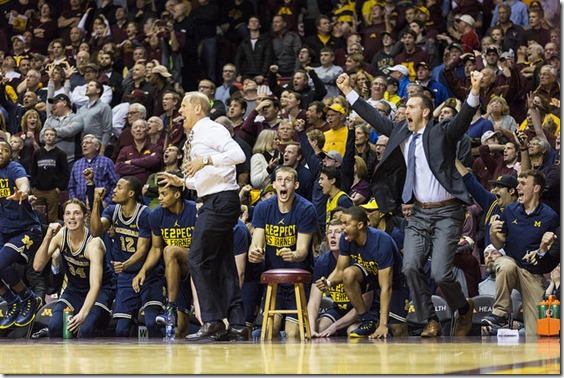
2